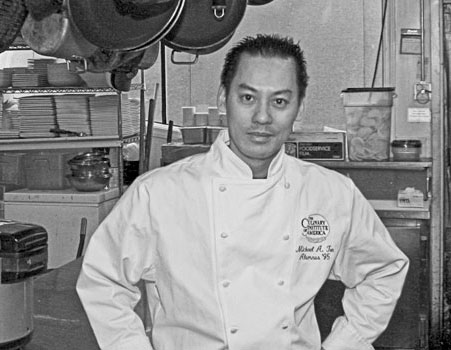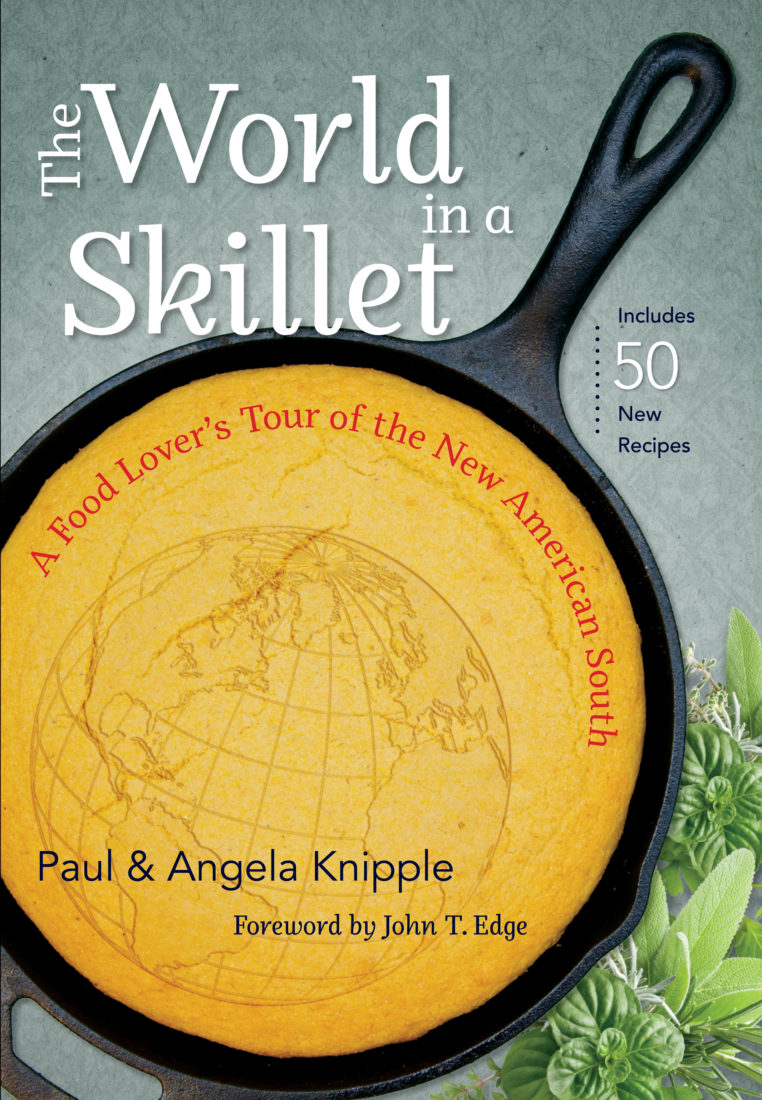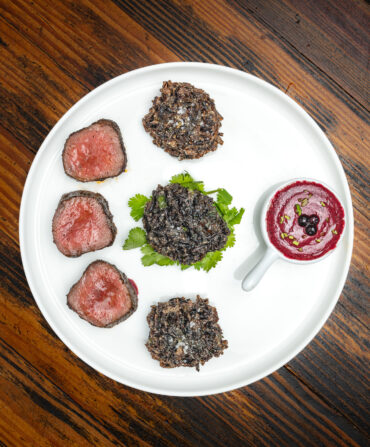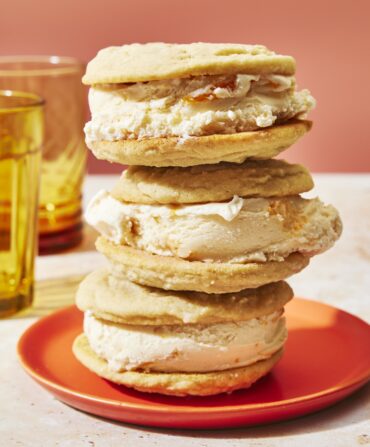Cha gio are a traditional Vietnamese dish often served as an appetizer or as a main dish with cellophane noodles. In Michael Ton’s version, the mushrooms in the mixture provide a richly dark flavor, while the taro root slices provide lightness.
Michael includes these rolls on Basa’s menu as an authentic Vietnamese offering. “Using taro root is very traditional in the imperial roll. Making it most traditional is using rice paper instead of wonton wrappers. One of the things I was afraid of when using rice paper was that it’s a little bit chewy. It’s crispy, but it’s a little chewy.”

Photo: Copyright © 2012 by Paul and Angela Knipple
Chef Michael Ton.
While it’s tempting to eat the imperial rolls as soon as they are cool enough to handle, Michael says that they’re best if you eat them the right way. “The traditional way of eating it is to take the imperial roll and put it in the lettuce. Pick the mint and put that in there. You have to have the mint. That kind of goes along with it. Roll it, dip it, eat it like a wrap. That’s how you’re supposed to eat it.”








